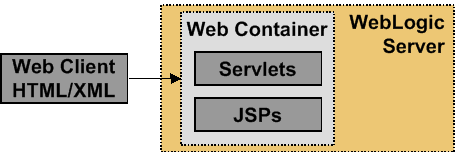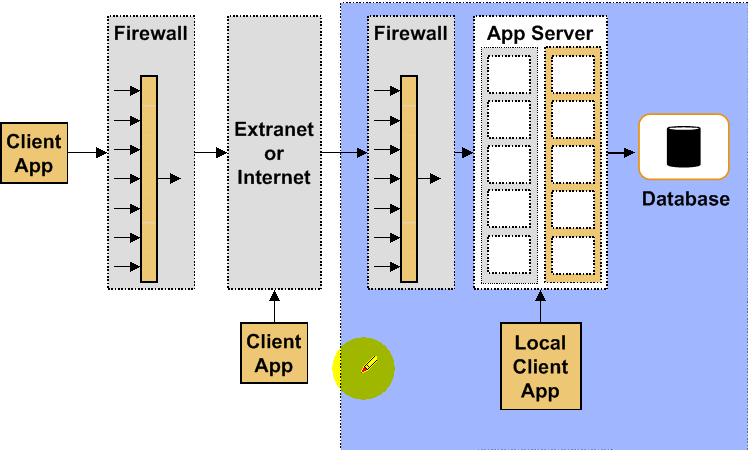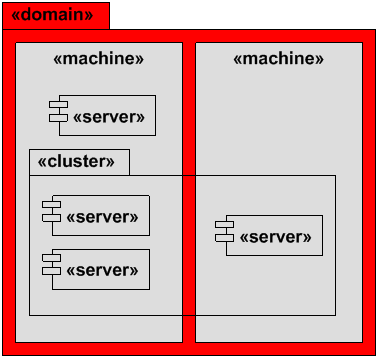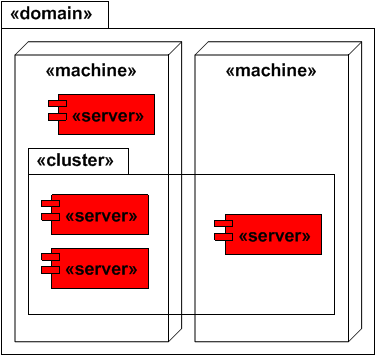Weblogic-学习笔记(3课 术语)
Web Client
A Web Client interacts with WLS via HTTP using servlets/JSPs.
Types of Web clients include:
Client Application
A client application interacts with WLS through JRMP/T3.IIOP,COM.
Types of clients include:
Proxy Server
Forwards requests to other machines
Can be used as a level of indirection and security
Can be used to load balance a system
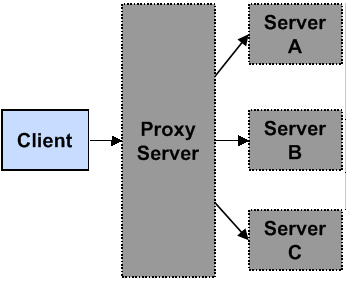
Firewalls
Provide filtering,authorization,and authentication services.
Help keep out hackers
Map port requests
Can act as proxy servers
Can decrease back-end network activity

Web Server
Web servers:
Provide Web content
- Communicate via HTTP,FTP,and so forth
- Can handle CGI requests
- Proxy some requests to application servers
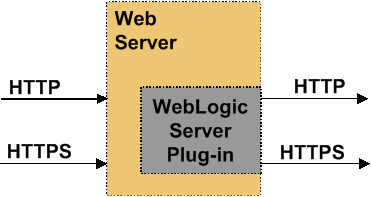
Application Servers
Provide services that support the execution and availability of deployed applications
Handle heavier processing chores than Web servers.

A Web App Server Configuration
An Application Server Configuration
Definition : Domain
A domain is a logically related group of Weblogic Server resources that you manage as a unit.
A domain provides one point of administration.
A Weblogic Server domain can logically separate:
Why Use Domans?
A domain is an administration feature that;
- Is transparent to applications
- Can be configured and administered,for technical or business reasons,even after applications are developed or in production
Weblogic Server domains can be used to separate:
- Development,test and production applications
- Administration and operational responsibilities
- Organizational or business divisions
Definition : Server
A server is an instance of weblogic.server executing in a JVM.
A server:
Administration Server
Is the central point of control for a domain Stores the configuration information and logs for a domain
Runs the Weblogic Administration Console

Definition : Managed Server
Is any server in a domain that is not the admin server
Contacts the admin server for configuration information
Runs business applications in a production evironment

Definition : Machine
Is a computer that hosts Weblogic Server(s) Runs a supported operating system platform
Can host multiple Weblogic Server instances

Definition : Cluster
A cluster is a logical group of WLS servers.
Weblogic clusters provide automatic:
- High Availability
- Load balancing
A cluster is transparent to a client.

Section Review
In this section we discussed:
The ways that distributed systems improve availability,scalability,and maintainability
The ways that standards for distributed systems improve the cost effectiveness of software development projects
The J2EE architecture and many J2EE technologies
The terms used to discuss Web architectures
The terms used to describe Weblogic Server features
